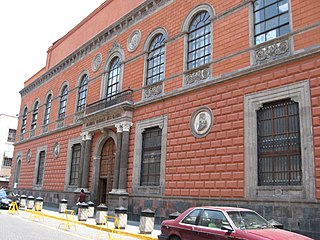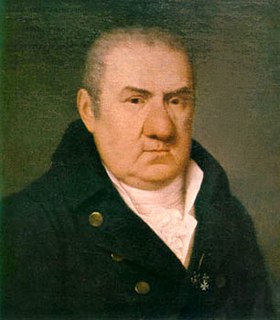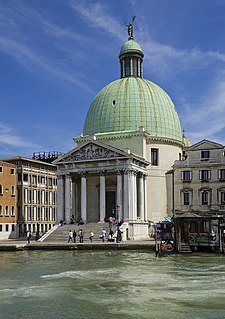 W
WCarlo Barabino was a prominent Italian architect of the Neoclassic period, active mainly in his native Genoa. He was a pupil of Giuseppe Barbieri. He designed the original Teatro Carlo Felice Opera House in Genoa; facade rebuilt after destruction in World War II. He also built the Palazzo Dell'Accademia in Genoa, and the facade of Santa Maria Assunta, Genoa (Carignano).
 W
WVincenzo Brenna was an Italian architect and painter who was the house architect of Paul I of Russia. Brenna was hired by Paul and his spouse Maria Fyodorovna as interior decorator in 1781 and by the end of 1780s became the couple's leading architect. Brenna worked on Pavlovsk Palace and Gatchina palaces, rebuilt Saint Isaac's Cathedral, and most notably created Saint Michael's Castle in Saint Petersburg. Most of his architectural works were created concurrently during Paul's brief reign. Soon after Paul was murdered in a palace coup Brenna, renowned for fraud and embezzlement barely tolerated by his late patron, retired and left Russia for an uneventful life in Saxony.
 W
WFrancesco Saverio Cavallari, also known in Mexico as Javier Cavallari, was an architect, professor, painter and archeologist who was active in Mexico City between 1857 and 1864.
 W
WAlberto Cavos was a Russian–Italian architect best known for his theatre designs, the builder of the Mariinsky Theatre in Saint Petersburg (1859–1860) and the Bolshoi Theatre in Moscow (1853–1856).
 W
WLuigi Clerichetti was a 19th-century Milanese architect, noted for his Neoclassical-style buildings. He designed the Palazzo Tarsis (1836–1838), and the Palazzo Gavazzi in 1838 for the wealthy Gavazzi family. He also designed the facade of the Palazzo Orsini of Milan during restoration of the 16th century building, and the Villa Ciani in Lugano, Switzerland in 1840.
 W
WAntonio Corazzi was an Italian architect working in Poland from 1819 to 1847, mainly in Neoclassical style.
 W
WCosimo Morelli was an Italian architect, active throughout the Papal States in a Neoclassic style.
 W
WCamillo Morigia was a north-Italian neo-classical architect. He is most notable for his designs for the Tomb of Dante and the facade of Santa Maria in Porto Basilica, both in his home-town of Ravenna.
 W
WLuigi Poletti was an Italian architect, active in a neoclassical style.
 W
WLeopoldo Pollack was an Austrian-born Italian architect who was active in Milan where he became one of the leading proponents of Neoclassical architecture.
 W
WGiuseppe Puini was an Italian engineer and architect who worked in the neoclassical style in Tuscany, largely at Livorno, where he was largely responsible for the piazza that provides an urbanistic setting of the Cisternone (1842) and the Church of Sant’Andrea, and for the Church of San Giuseppe (illustration).
 W
WGiacomo Quarenghi was the foremost and most prolific practitioner of neoclassical architecture in Imperial Russia, particularly in Saint Petersburg. He brought into vogue an original monumental style, of Palladian inspiration, which was a reference for many architects who worked in Russia.
 W
WGiovanni Antonio Scalfarotto was an Italian architect from Venice.
 W
WGian Antonio Selva was an Italian neoclassical architect.
 W
WGiuseppe Valadier was an Italian architect and designer, urban planner and archeologist, a chief exponent of Neoclassicism in Italy.
 W
WRodolfo Vantini was an Italian architect. He is remembered for his Neoclassical contributions to architecture in his native city of Brescia and in the surrounding regions of northern Italy. His masterpiece is the design of Milan's Porta Orientale customs offices.
 W
WCarlo Vanvitelli (1739–1821) was an Italian architect and engineer, who worked mainly in Naples and its surrounding area.